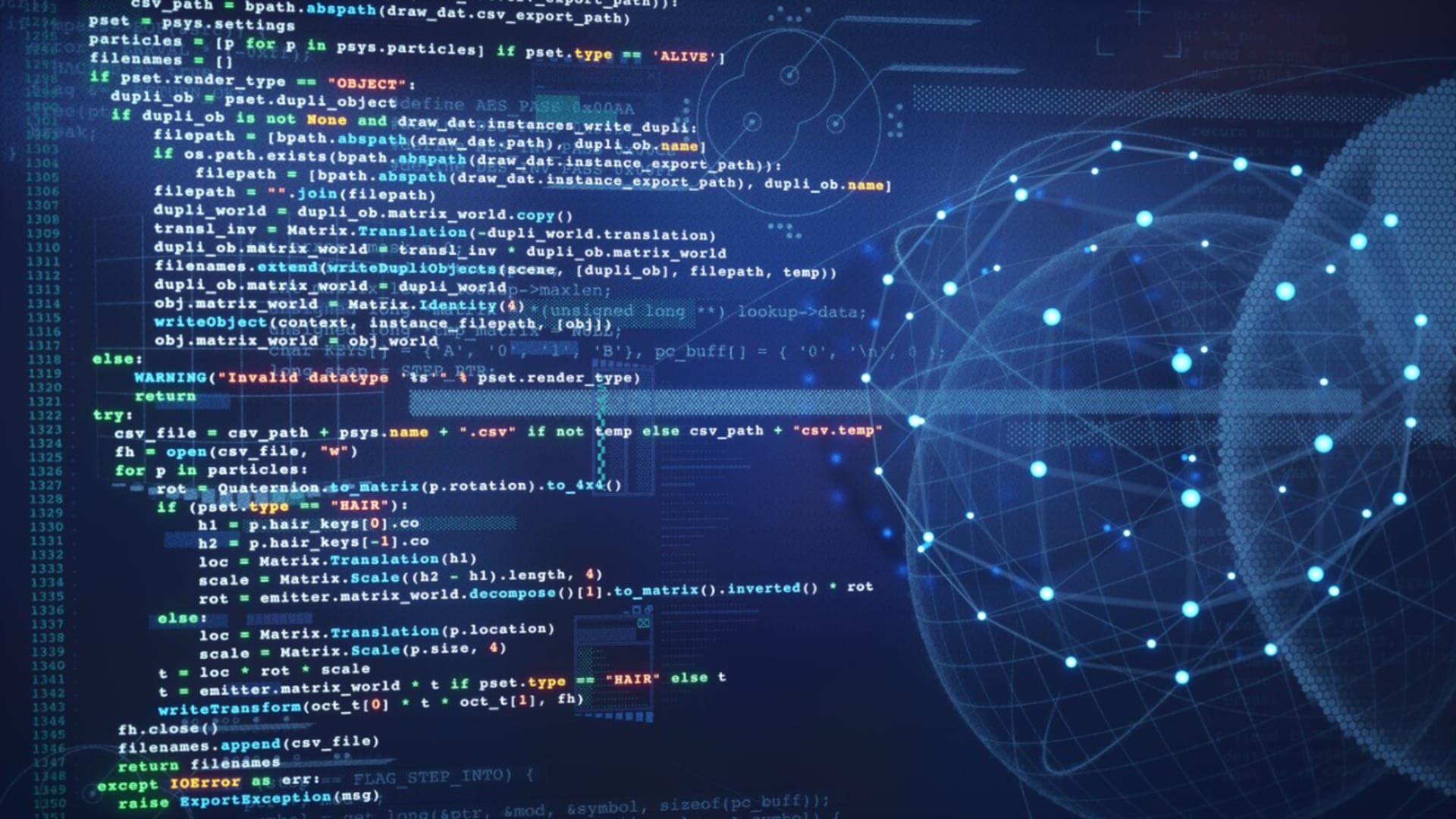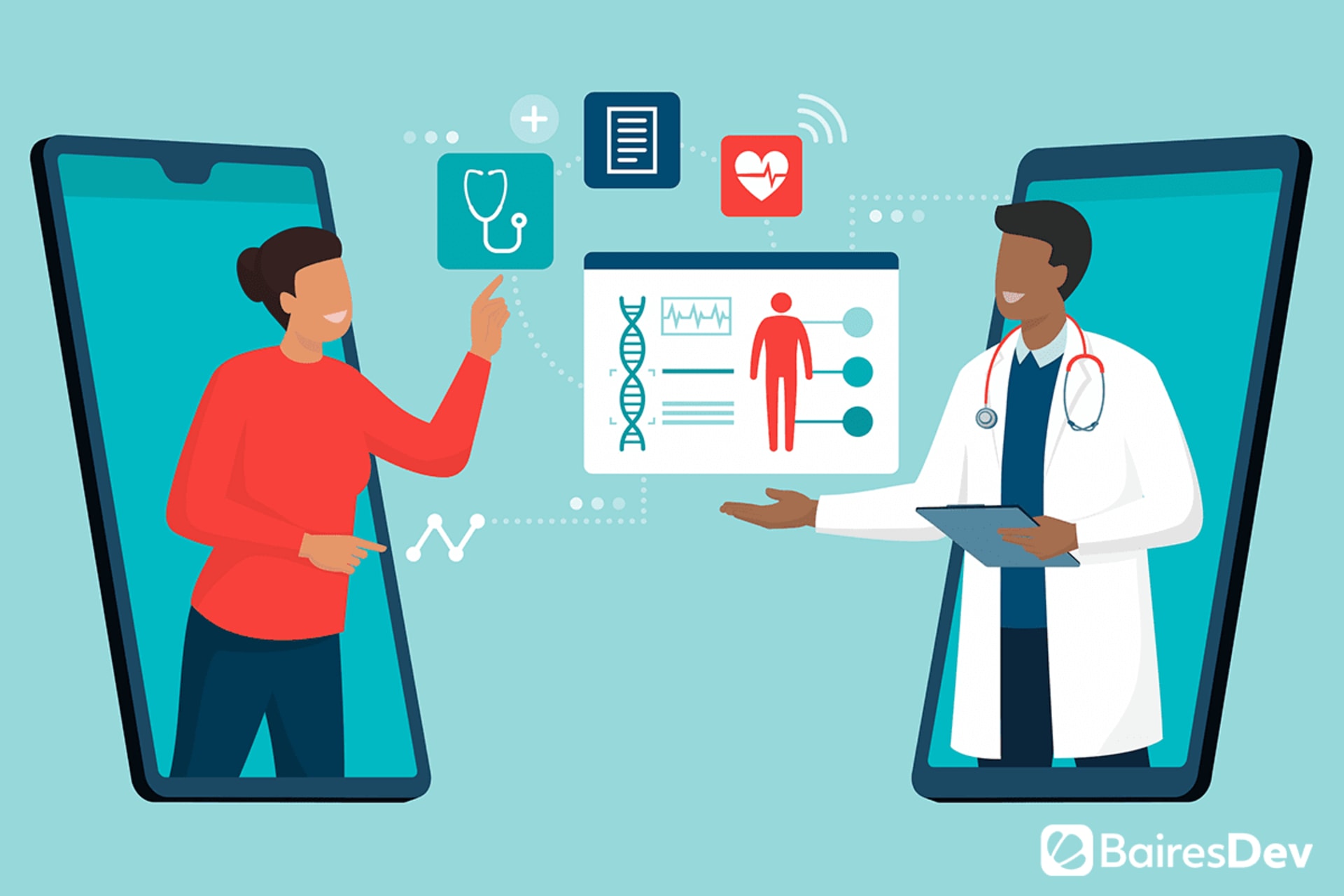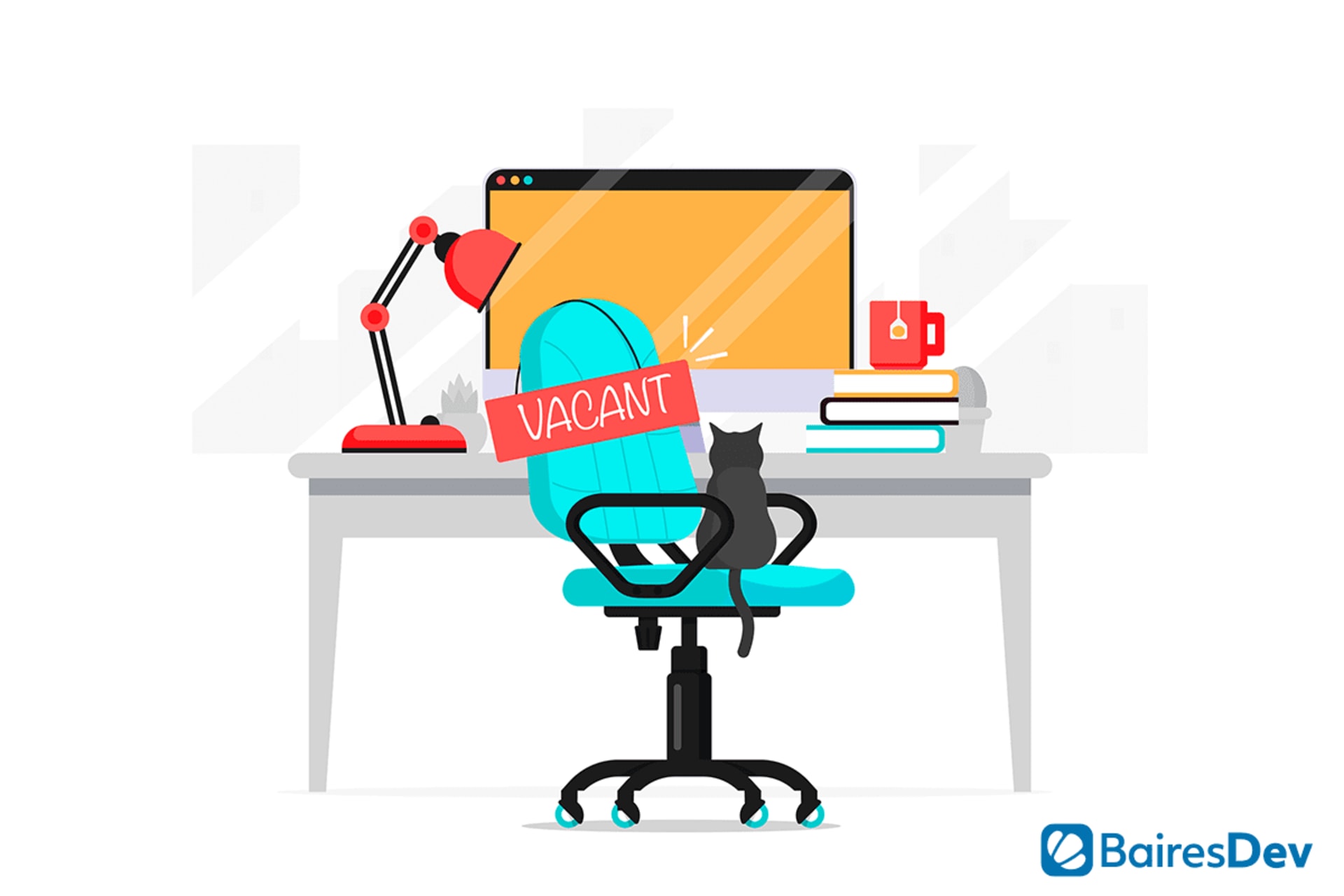Key software development trends are emerging as companies seek innovative ways to keep pace. For instance, the growing need for secure digital transactions is driving blockchain adoption to new heights, while advancements in artificial intelligence (AI) are prompting more focus on ethical AI practices. App development is also evolving rapidly, with companies leveraging AI to enhance user experiences and streamline operations.
As more businesses embrace digital acceleration, they turn to software development innovations to optimize processes, benefit customers, and strengthen their bottom lines. Industry leaders like BairesDev are at the forefront, helping companies rethink operations through cloud-based applications, automation, and emerging technologies. No one can predict exactly how the landscape will look in 2025, but these insights reflect the latest software development trends and highlight the tools and strategies shaping the industry’s future.

AI-powered tools transform software development from code to delivery
AI is revolutionizing software development by streamlining processes from coding to deployment. Tools like GitHub Copilot assist developers with real-time code suggestions, reducing repetitive tasks and accelerating software development. Automated testing platforms, such as Test.ai and Applitools, seamlessly integrate into CI/CD pipelines, predicting bugs and delivering smooth, error-free releases. Beyond coding and testing, AI-driven project management tools like Jira Advanced Roadmaps use predictive analytics to optimize timelines and resources.
In operations, AIOps solutions proactively monitor infrastructure, detect anomalies, and recommend fixes, enhancing system performance with minimal manual intervention. This AI integration frees developers to focus on innovation while creating efficiency across the software development process. As artificial intelligence evolves, it will align even more closely with cloud services and infrastructure, offering real-time processing and delivering smarter, scalable digital solutions across industries, in line with emerging software development trends.
Low-code and no-code platforms speed time to market
Low-code and no-code development platforms are revolutionizing the software development by allowing businesses to create applications quickly, using visual interfaces and pre-built components. These tools minimize the need for extensive coding, allowing non-technical users to build solutions and automate workflows. This reduces reliance on engineering resources, empowering teams to accelerate time-to-market and respond to market demands with greater agility.
However, these platforms are not a replacement for hiring skilled software developers. Complex projects require experienced developers to build robust, scalable, and secure systems. Low-code and no-code tools, while powerful, are still in their early stages and may not support the same level of customization or scalability required for enterprise-level solutions. Platforms like Microsoft Power Apps or Bubble offer efficiency for certain tasks, but talented software engineers remain essential for building core systems, integrating advanced technologies, and tackling sophisticated business challenges.
The future of these platforms lies in complementing, not replacing, traditional software development. They serve as tools that augment software teams for faster prototyping and innovation, especially for startups and SMEs. As this technology evolves, it will create new possibilities, aligning with the latest software development trends, but expert developers will always play a crucial role in driving high-quality solutions.
The ascendancy of Python and JavaScript
Python and JavaScript remain the dominant programming languages in the software development industry, each excelling in different areas. As demand for digital solutions increases, AI tools, natural language processing, and scalable web applications grows, these languages continue to be indispensable for developers. While Python powers data-centric and machine-learning applications, JavaScript remains at the heart of web development, driving modern front-end frameworks and native apps.
Python
Python’s simplicity, extensive library support, and versatility have cemented its place as the go-to programming language for AI, machine learning, automation, and data analysis. Its popular frameworks—like TensorFlow, Pandas, and Flask—allow developers to build everything from predictive analytics models to web applications. Python also plays a key role in IoT and automation projects, integrating seamlessly with cloud services to process client data in real time. As these technologies become more widespread, Python’s dominance will only increase, particularly in fields that demand rapid prototyping and data-intensive workflows, reflecting ongoing software development trends.
JavaScript
JavaScript continues to evolve as the primary language for web development, thanks to frameworks like React, Node.js, and Angular. It supports the creation of dynamic, responsive user interfaces and powers progressive web apps (PWAs), offering native-like experiences on the web. With its ability to run on both client and server sides, JavaScript remains essential for building scalable cloud-based applications. As businesses invest in microservices architecture and real-time web solutions, JavaScript’s versatility makes it a critical tool for software developers.
Progress in modern languages: Go, Rust, and Kotlin
Modern programming languages like Rust, Go, and Kotlin are gaining momentum as they address specific industry needs and challenges that older languages struggle to meet. These languages offer enhanced performance, safety, scalability, and productivity, making them ideal for emerging technologies, cloud-native applications, and mobile development. As businesses seek more efficient and secure solutions, Rust, Go, and Kotlin are becoming essential tools in evolving software development trends.
Rust
Rust has become a popular programming language due to its focus on safety, speed, and concurrency, making it a strong choice for systems programming and performance-intensive applications. Its memory safety model prevents common issues like data races and buffer overflows, without needing a garbage collector. Major companies like Microsoft and Amazon are using Rust for secure, scalable solutions, and it has found a niche in areas like blockchain development, game engines, and embedded systems. Rust’s use is expected to grow as industries demand more reliable and efficient software.
Go
Go, also known as Golang, is known for its simplicity and efficiency, making it ideal for cloud computing, microservices, and backend systems. Its built-in concurrency model, using goroutines, allows developers to build highly scalable applications. Go powers critical tools like Docker and Kubernetes, positioning it as a core technology in cloud-native development. As businesses adopt distributed architectures and real-time applications, Go will remain an essential language for building lightweight and reliable backend services.
Kotlin
Kotlin has gained momentum primarily in mobile app development, becoming the preferred language for Android applications. Its concise syntax, seamless interoperability with Java, and strong tooling make it attractive for developers. Beyond mobile, Kotlin is expanding into backend development, especially with frameworks like Ktor. It is also being adopted for enterprise software solutions, where simplicity and productivity are valued. Kotlin’s dual role in mobile and backend development positions it to remain a key player as businesses evolve their software ecosystems.
Cloud-native development and microservices architecture supports seamless scalability
Cloud-native applications are designed to take full advantage of cloud infrastructure, offering greater flexibility, reliability, and scalability. By breaking applications into smaller, independently deployable services, microservices architecture allows teams to develop, deploy, and update components without affecting the entire system. This modular approach reduces downtime and accelerates delivery cycles, making it ideal for businesses that need to respond quickly to market demands, all while leveraging the benefits of cloud computing.
Technologies like Kubernetes and Docker are instrumental in managing cloud-native environments, provides seamless container orchestration and service deployment. Microservices also support using multiple programming languages within the same project, allowing developers to choose the best tools for specific tasks. As companies increasingly adopt real-time data processing and distributed systems, cloud-native development and microservices will remain essential for building robust, future-proof software that can scale with business growth.
DevSecOps integrates security throughout the development pipeline
DevSecOps—an evolution of DevOps—embeds security at every stage of the software development lifecycle, from design to deployment. This approach shifts security left, integrating automated security checks directly into software development workflows rather than treating security as an afterthought. With continuous monitoring and testing tools, DevSecOps helps identify vulnerabilities early, reducing the risk of data breaches and maintaining compliance with security standards.
By automating tasks like vulnerability scanning, code analysis, and security patching, DevSecOps empowers teams to release software quickly without compromising safety. Tools like SonarQube, Checkmarx, and automated security testing frameworks are increasingly integrated into CI/CD pipelines, allowing developers to address potential risks in real-time. As cyber threats become more sophisticated, the importance of integrating security throughout the software development process will only grow, making DevSecOps essential for companies looking to safeguard their software systems while maintaining agility and speed.
Blockchain applications move beyond finance into supply chains and healthcare
Blockchain technology, initially known for powering cryptocurrencies, is now driving innovation across diverse industries, including supply chains and healthcare. Its ability to provide transparency, security, and traceability makes it a valuable tool for managing complex systems. In supply chains, blockchain securely documents every step—from production to delivery—preventing fraud and offering real-time tracking of goods. Companies are adopting blockchain to improve logistics, reduce delays, and enhance accountability, giving them a competitive edge in global markets.
In healthcare, blockchain is being used to secure patient data and improve interoperability between providers. Medical records stored on blockchain networks protect data privacy while allowing authorized stakeholders easy access. Blockchain also plays a critical role in managing drug supply chains, verifying medication authentic,ity and preventing counterfeit products from reaching patients. As industries embrace digital transformation, blockchain will become an integral part of building secure, transparent systems across multiple sectors.
5G introduces new capabilities for real-time and connected applications
The rollout of 5G networks worldwide transforms how applications are built and experienced for faster, more reliable connectivity. With its ultra-low latency and high-speed data transfer, 5G opens new possibilities for real-time industry applications. Developers can create connected solutions such as smart city technologies, autonomous vehicles, and remote healthcare systems that rely on instant data processing and seamless communication between devices.
For mobile apps, 5G enhances user experience by providing richer, more interactive content without compromising speed or performance. In manufacturing, 5G-powered IoT devices improve efficiency by allowing machines to communicate in real time, facilitating predictive maintenance and process automation. Similarly, augmented reality (AR) and virtual reality (VR) applications benefit from 5G by delivering immersive experiences without lag, which is crucial for sectors like retail, education, and entertainment. As adoption increases, 5G is key for innovation, enhancing the potential of real-time data processing and further advancing cloud-based applications.
Quantum computing’s potential to solve complex problems takes shape
One software development trend with enormous implications for the future, quantum computing promises to revolutionize industries with faster solutions to challenges like financial modeling, drug discovery, and supply chain optimization. Its ability to process vast amounts of data simultaneously offers new possibilities that conventional computers cannot match. Tech giants like IBM, Google, and Microsoft actively develop quantum systems, pushing the technology closer to practical use.
One focus area is quantum-resistant encryption, which keeps sensitive data secure as quantum capabilities advance. Quantum systems are also expected to integrate with cloud infrastructure, offloading data-heavy processes to enhance efficiency. Although still in development, quantum computing holds the potential to reshape how businesses handle optimization tasks and manage complex datasets, creating new opportunities across multiple industries.
Edge computing expands to power real-time IoT solutions
By processing data closer to its source, edge computing reduces latency and supports faster decision-making, critical for applications like autonomous vehicles, smart factories, and healthcare monitoring. This localized data processing allows systems to respond in real time, even when internet connectivity is limited or intermittent.
Industries are increasingly adopting edge computing to support predictive maintenance, optimize production lines, and enhance remote monitoring capabilities. It complements cloud infrastructure by offloading workloads, enabling efficient data management without overwhelming central servers. As smart city technologies and industrial IoT solutions expand, edge computing will play a pivotal role in creating scalable, low-latency systems. This architecture allows businesses to handle real-time analytics while maintaining cost efficiency and data security.
Emphasis on UX: Creating immersive and intuitive user journeys
As competition intensifies, delivering seamless and engaging user experiences (UX) has become a priority for software development companies. Businesses invest in UX design to make their products easy to use, visually appealing, and aligned with user needs. Techniques like user-centered design, A/B testing, and behavior analytics allow teams to refine applications and optimize engagement.
Immersive technologies, including augmented reality (AR) and virtual reality (VR), are also gaining traction. They enhance digital interactions and provide new ways to engage users. Whether through interactive mobile apps, responsive web interfaces, or progressive web applications, the focus is on creating smooth, intuitive journeys that drive customer satisfaction and retention.
Good UX is no longer just a competitive advantage—it is essential for user adoption and long-term loyalty. As software evolves, developers must align their processes with user feedback, keeping products relevant, enjoyable, and effective across multiple platforms.
CI/CD practices drive faster feature releases and updates
Continuous Integration and Continuous Delivery (CI/CD) have become essential practices for modern software development, allowing teams to release new features and updates more frequently and reliably. CI allows developers to integrate code changes into a shared repository multiple times a day, with automated testing validating each change. CD automates the deployment process, making sure every code update passes through a consistent pipeline before reaching production.
These practices reduce the risk of bugs, shorten release cycles, and allow for rapid responses to market demands. Automated testing, combined with infrastructure-as-code (IaC) tools, keeps environments consistent across development and production. CI/CD also fosters collaboration between development and operations teams, aligning with DevOps principles to enhance efficiency. As businesses seek to maintain competitive agility, CI/CD has become critical for delivering updates quickly, minimizing downtime, and driving continuous product improvement.
Remote work permanence drives the rise of distributed development teams
The shift to remote work, accelerated by the pandemic, is now a permanent feature of the software development industry. Companies leverage distributed teams to access global talent, enhance innovation, and reduce operational costs. With collaboration tools like Slack, Zoom, and Jira, developers can communicate and coordinate projects across time zones, maintaining smooth workflows and real-time alignment.
Managing distributed teams requires careful planning to maintain efficiency and foster knowledge sharing. Many organizations are adopting cloud-based platforms to support development environments, version control, and seamless collaboration. As remote work becomes the norm, businesses build scalable, resilient development processes while offering employees greater flexibility and work-life balance. This shift helps meet market demands and establishes distributed teams as a strategic asset in the evolving software landscape.
AR and VR expand from entertainment to enterprise applications
Augmented reality (AR) and virtual reality (VR) technologies, once centered around gaming and entertainment, are now making significant inroads into enterprise applications. In industries such as healthcare, retail, and manufacturing, these immersive technologies are enhancing training, remote collaboration, and data visualization. For example, healthcare providers are using VR for patient therapy and surgical simulations, while retail businesses employ AR to offer virtual try-ons and product previews.
AR and VR also play a critical role in education and workforce training, allowing employees to engage in realistic simulations that improve skill development and safety. Manufacturing firms are adopting AR for hands-free access to real-time data and instructions, increasing efficiency on production lines. As these technologies mature, they are becoming essential tools for businesses aiming to enhance operations, improve customer engagement, and create new opportunities for innovation in various industries, reflecting key software development trends.
2025 will be a big year in software development
With so many exciting advancements on the horizon, the coming year will bring fresh opportunities to rethink how technology shapes our world. These software development trends are just the beginning. Companies are moving beyond simply adopting new tools—they’re using technology to transform how they grow, connect with customers, and create meaningful impact. As digital acceleration picks up, businesses that embrace innovation with purpose will not just meet their goals—they’ll discover new ways to thrive, balancing profitability with social responsibility and customer care. The future belongs to those who can harness these breakthroughs to build smarter, more resilient systems that make a lasting difference.







